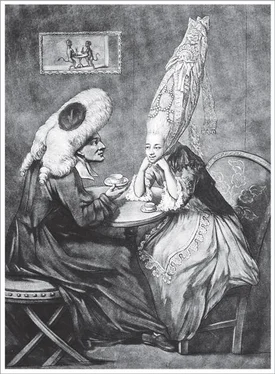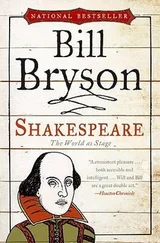Bill Bryson - At Home
Здесь есть возможность читать онлайн «Bill Bryson - At Home» весь текст электронной книги совершенно бесплатно (целиком полную версию без сокращений). В некоторых случаях можно слушать аудио, скачать через торрент в формате fb2 и присутствует краткое содержание. Жанр: Старинная литература, на английском языке. Описание произведения, (предисловие) а так же отзывы посетителей доступны на портале библиотеки ЛибКат.
- Название:At Home
- Автор:
- Жанр:
- Год:неизвестен
- ISBN:нет данных
- Рейтинг книги:4 / 5. Голосов: 1
-
Избранное:Добавить в избранное
- Отзывы:
-
Ваша оценка:
- 80
- 1
- 2
- 3
- 4
- 5
At Home: краткое содержание, описание и аннотация
Предлагаем к чтению аннотацию, описание, краткое содержание или предисловие (зависит от того, что написал сам автор книги «At Home»). Если вы не нашли необходимую информацию о книге — напишите в комментариях, мы постараемся отыскать её.
At Home — читать онлайн бесплатно полную книгу (весь текст) целиком
Ниже представлен текст книги, разбитый по страницам. Система сохранения места последней прочитанной страницы, позволяет с удобством читать онлайн бесплатно книгу «At Home», без необходимости каждый раз заново искать на чём Вы остановились. Поставьте закладку, и сможете в любой момент перейти на страницу, на которой закончили чтение.
Интервал:
Закладка:
The most popular feature at the Great Exhibition was not an exhibition at all, but rather the elegant “retiring rooms,” where visitors could relieve themselves in comfort, an offer taken up with gratitude and enthusiasm by 827,000 people—11,000 of them on a single day. Public facilities in London were woefully lacking in 1851. At the British Museum, up to 30,000 daily visitors had to share just two outside privies. At the Crystal Palace the toilets actually flushed, enchanting visitors so much that it started a vogue for installing flushing toilets at home—a development that would quickly have catastrophic consequences for London, as we shall see.
The Great Exhibition offered a social breakthrough as well as a sanitary one, for it was the first time that people of all classes were brought together and allowed to mingle in intimate proximity. Many feared that the common people—“the Great Unwashed,” as William Makepeace Thackeray had dismissively dubbed them the previous year in his novel The History of Pendennis —would prove unworthy of this trust and spoil things for their superiors. There might even be sabotage. This was, after all, just three years after the popular uprisings of 1848, which had convulsed Europe and brought down governments in Paris, Berlin, Kraków, Budapest, Vienna, Naples, Bucharest, and Zagreb.
The particular fear was that the exhibition would attract Chartists and their fellow travelers. Chartism was a popular movement named for the People’s Charter of 1837, which sought a range of political reforms—all fairly modest in retrospect—from the abolition of rotten and pocket boroughs* to the adoption of universal male suffrage. Over the space of a decade or so, Chartists presented a series of petitions to Parliament, one of them over six miles long and said to be signed by 5.7 million people. Parliament was impressed but rejected them all anyway, for the people’s own good. Universal suffrage, it was commonly agreed, was a dangerous notion—“utterly incompatible with the existence of civilization,” as the historian and member of Parliament Thomas Babington Macaulay put it.
In London, matters came to a head in 1848 when the Chartists announced a mass rally on Kennington Common, south of the Thames. The fear was that they would work themselves into a froth of indignation, swarm over Westminster Bridge, and seize Parliament. Government buildings throughout the city were fortified in readiness. Lord Palmerston, the foreign secretary, blocked the windows of the Foreign Office with bound volumes of the Times . At the British Museum men were stationed on the roof with a supply of bricks to rain down on the heads of anyone who tried to take the building. Cannons were placed outside the Bank of England, and employees at a range of state institutions were issued with swords and ancient, doubtfully maintained muskets, many of them at least as dangerous to their users as to anyone bold enough to step in front of them. Standing by were 170,000 special constables—mostly rich men and their servants—under the command of the doddering Duke of Wellington, now seventy-nine years old and deaf to anything less noisy than an extremely robust shout.
In the event, the rally fizzled out, partly because the Chartists’ leader, Feargus O’Connor, was beginning to behave bizarrely from an as-yet-undiagnosed case of syphilitic dementia (for which he would be committed to an asylum the following year), partly because most of the participants weren’t really revolutionaries at heart and didn’t wish to cause or be part of a lot of bloodshed, and partly because a timely downpour made retiring to a pub suddenly seem a more attractive option than storming Parliament. The Times decided that the “London mob, though neither heroic, nor poetical, nor patriotic, nor enlightened, nor clean, is a comparatively good-natured body,” and, however patronizing, that was about right.
Despite this reprieve, feelings in some quarters continued to run strong in 1851. Henry Mayhew, in his influential London Labour and the London Poor , published that year, noted that working people “almost to a man” were “red-hot proletarians, entertaining violent opinions.”
But even the most hotheaded proletarian, it seems, loved the Great Exhibition. It opened on May 1, 1851, without incident—a “beautiful and imposing and touching spectacle,” in the words of a radiant Queen Victoria, who called opening day “the greatest day in our history” and sincerely meant it. People came from every corner of the country. A woman named Mary Callinack, aged eighty-five, walked more than 250 miles from Cornwall, and so made herself famous. Altogether 6 million people attended in the five and a half months that the Great Exhibition was open. On the busiest day, October 7, almost 110,000 people were admitted. At one point, 92,000 were in the building at the same time—the largest number of people ever to be indoors in a single location to that time.
Not every visitor was enchanted. William Morris, the future designer and aesthete, then aged seventeen, was so appalled by what he saw as the exhibition’s lack of taste and veneration of excess that he staggered from the building and was sick in the bushes. But most people adored it, and nearly all behaved themselves. During the whole of the Great Exhibition just twenty-five people were charged with offenses—fifteen for picking pockets and ten for petty larceny. The absence of crime was even more remarkable than it sounds, for by the 1850s Hyde Park had become notoriously dangerous, particularly from dusk onward, when the risk of robbery was so great that the practice arose of crossing the park only after forming a convoy. Thanks to the crowds, for just under half a year Hyde Park was one of the safest places in London.
The Great Exhibition cleared a profit of £186,000, enough to buy thirty acres of land south of Hyde Park, in an area informally called Albertopolis, where were built the great museums and institutions that still dominate the neighborhood today—the Royal Albert Hall, the Victoria and Albert Museum, the Natural History Museum, the Royal College of Art, and the Royal College of Music, among others.
While people tried to decide what to do with it, Paxton’s mighty Crystal Palace remained standing in Hyde Park until the summer of 1852. Almost no one wanted it to go altogether, but few could agree on what should become of it. One slightly overexcited proposal was to convert it into a glass tower a thousand feet high. Eventually, the structure was moved to a new park—the Crystal Palace Park—at Sydenham in South London. Somehow in the process it became even larger; the new Crystal Palace was half as big again and employed twice the volume of glass. Because it was sited on a slope, its re-erection was much more of a challenge. Four times it collapsed. Some sixty-four hundred workers were needed to put the new building up, and it took them more than two years to do so. Seventeen of them lost their lives. Everything about the Crystal Palace that had seemed magical and blessed had oddly leaked away. It never regained its central place in the nation’s affections. In 1936, the whole thing burned down.
Prince Albert died ten years after the Great Exhibition, and the great Gothic spaceship known as the Albert Memorial was built just west of where the Crystal Palace had stood, at a whopping cost of £120,000, or about half as much again as the Crystal Palace itself had cost. There today Albert sits enthroned under an enormous gilded canopy. On his lap he holds a book: the catalog of the Great Exhibition. All that remains of the original Crystal Palace itself is a pair of large decorative wrought-iron gates that once guarded the ticket checkpoint at the entrance to Paxton’s exhibition hall and now, unnoticed, mark a small stretch of boundary between Hyde Park and Kensington Gardens.
Читать дальшеИнтервал:
Закладка:
Похожие книги на «At Home»
Представляем Вашему вниманию похожие книги на «At Home» списком для выбора. Мы отобрали схожую по названию и смыслу литературу в надежде предоставить читателям больше вариантов отыскать новые, интересные, ещё непрочитанные произведения.
Обсуждение, отзывы о книге «At Home» и просто собственные мнения читателей. Оставьте ваши комментарии, напишите, что Вы думаете о произведении, его смысле или главных героях. Укажите что конкретно понравилось, а что нет, и почему Вы так считаете.












